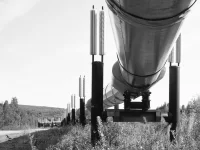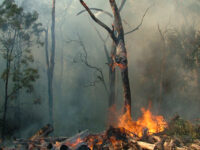Fields once green and lush, pockmarked and rife with forgotten land mines. Two cities, hundreds of thousands of lives, gone in an instant. Shrapnel in trees, poisoned air, scorched earth.
These are the devastating effects of war. Like carbon emissions, oil spills, and deforestation, most of the environmental disasters we face today are man-made. War is no exception. As our technology has significantly advanced within the past two centuries, military weaponry has also evolved and become more destructive. In World War I, we saw the creation of flamethrowers, tanks, and poison gases, such as chlorine and mustard gas. World War II led to the infamous creation of the atomic bomb. During the Vietnam War, the U.S. military used a powerful herbicide mixture called Agent Orange to destroy crops and forest cover, which later proved to cause severe health issues. While war is typically associated with a long list of casualties, the decimated land and plant and animal life often go uncounted.
Like carbon emissions, oil spills, and deforestation, most of the environmental disasters we face today are man-made. War is no exception.
The mere existence of military power damages the environment. Building and maintaining military forces consumes a vast amount of resources, ranging from common metals for production to oil for fuel. Military training disrupts landscapes and natural habitats. The use of weapons, vehicles, and aircraft can damage sensitive landscapes and geodiversity as well as create chemical and noise pollution. Detonation of explosive weapons creates large amounts of debris and rubble, contributing to soil and air pollution. Destruction of environmentally-sensitive structures such as water treatment plants or power stations can also lead to repercussions in energy loss. In militaries all around the world, surplus ammunition is disposed of through open burning, detonation, or — historically — dumping it into the sea. On top of polluting the environment, military activities generate massive carbon emissions, worsening the climate change crisis.
On top of polluting the environment, military activities generate massive carbon emissions, worsening the climate change crisis.
Military strategies themselves often purposefully aim to destroy the environment to gain the upper hand in battle. Scorched earth policy, which involves setting fire to anything that might be used by an invading enemy force, has roots back to the ancient Romans. A similar strategy called flooding involves destroying dams to stop enemies from advancing. Trench warfare in World War I involved digging up long systems of ditches throughout open fields on the front lines that are still evident to this day. Some troops even filled their trenches with booby-traps as they retreated for incoming enemies to find, disrupting the landscape further and allowing chemicals to seep into the soil and groundwater. During the 1991 Gulf War, the retreating Iraqi army intentionally destroyed over 600 oil wells in Kuwait, releasing a devastating, toxic mix of crude oil, noxious gas, and metals into the air and land.
After all of this destruction, how could nature possibly heal? Luckily, there have been efforts made to restore damaged landscapes and ecosystems. Since 2003, the Environmental Protection Agency and U.S. Agency for International Development have been working with the Vietnamese government to clean up remnants of Agent Orange by identifying “hot spots” of contamination, setting up containment measures such as filtration systems and sediment traps, and cleaning up the soil by superheating it. Police forces all over Europe continually monitor for any undetonated explosives left over from World War II via metal detectors and analysis of old aerial reconnaissance photos.
Even without human intervention, nature typically finds a way to heal itself over time. It has been well-documented that forested areas will gradually begin to grow back after fires as long as there are still seeds, roots, and soil. The half-life of the radiation created by an atomic bomb is incredibly short compared to the nuclear disasters of Chernobyl and Fukushima. This allowed Hiroshima and Nagasaki to rebuild and become repopulated within two years of the atomic bombings, with both of them returning to their original sizes by the mid-1950s.
Grass grows and softens the harsh lines of the trenches. People move back into cratered cities once the radiation leaves, building new homes from the rubble. The trees grow back. The air clears. The earth is green again.
This could be our future. If we learn how to take care of each other instead of resorting to armed conflict and destruction, we could still have a planet left to share.
Source: Environment and History (2008). DOI: 10.3197/096734008X333581






Nice article and definitely so true. When there is a war, it has always been the impact on lives and the economy. The environment has always been a second thought. However, in order for lives to be rebuilt and economies to flourish again, you need an environment that can support and sustain before any progress can be made.